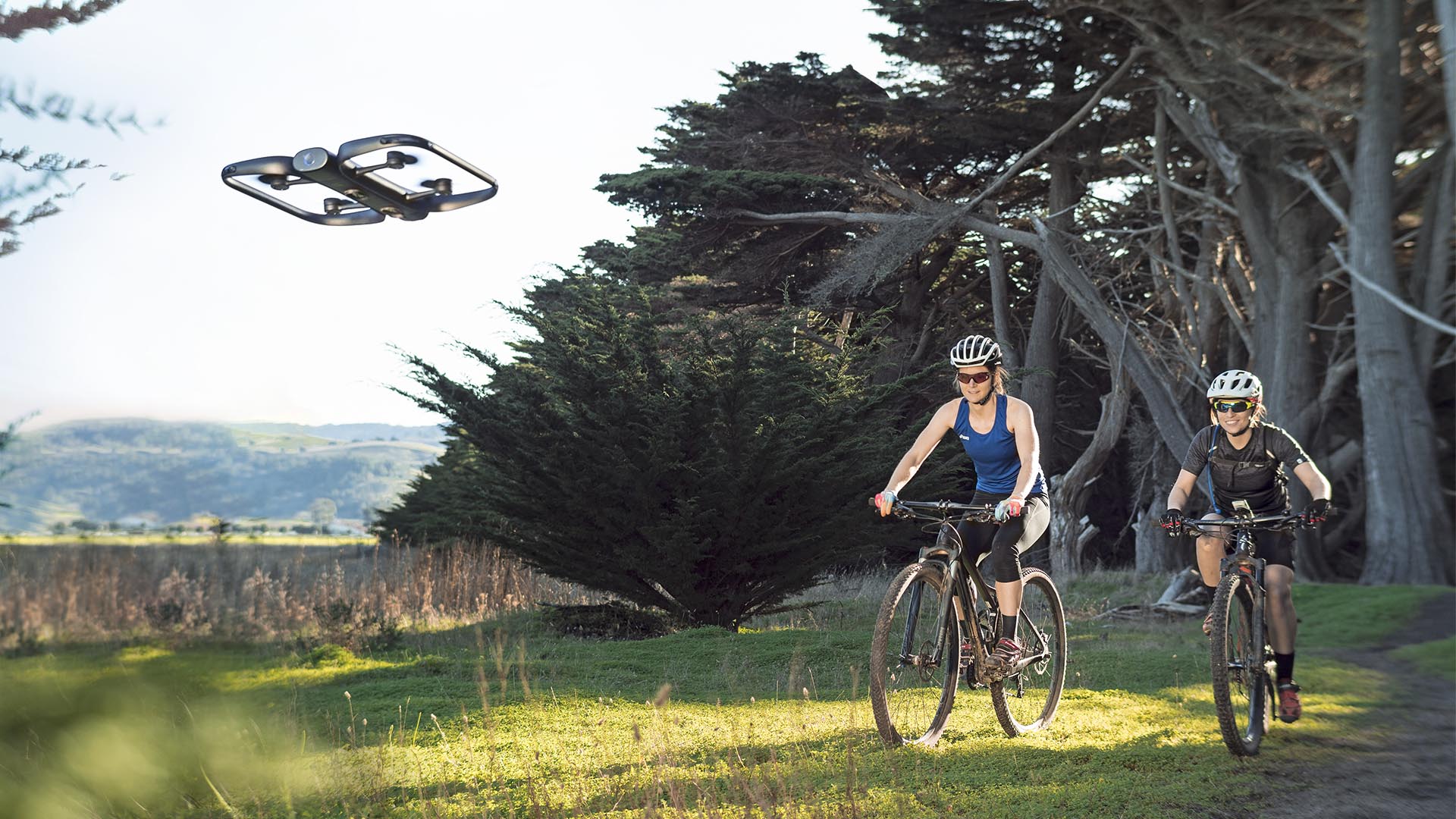Drones that dodge obstacles without guidance can pursue you like paparazzi

Artificially intelligent drones are coming—and they’re going to shoot some really sick snowboarding videos along the way.
A startup called Skydio is launching the first drone capable of visually imprinting on a person, a bit like a needy duckling, and then following him or her around, deftly navigating around trees, pylons, and other obstacles while shooting video. In other words, your very own robotic, airborne paparazzo.
The new drone, called R1, will be marketed as an easy way to capture action like biking, skiing, or rafting in high-quality video. But Adam Bry, founder and CEO of Skydio, says his company is thinking about how it could be used to inspect roofs for damage and to patrol properties.
Aerial vehicles are already being used to inspect buildings, perform security patrols, and tally inventory inside warehouses. But to navigate a complex and unfamiliar environment, a drone typically needs to be controlled by an expert pilot on the ground, or else its surroundings must be mapped in great detail.
The R1 drone uses deep learning to recognize a person. It employs conventional methods for mapping and navigation, along with a mathematical approach to path planning that Bry has been working on since his time as a student at MIT. One of his projects involved teaching a plane with a two-foot wingspan to fly through a busy garage without crashing (see “Daredevil drone flies through the trees like an ace”).
Self-flying drones are harder to perfect than self-driving cars. Mapping the environment and planning a path must be done in three dimensions rather than two, and drones typically cannot carry much in the way of computing power.
But navigating a busy physical world is a fundamental challenge for machines of many kinds, so advances in drone control could perhaps prove useful for AI more broadly.
Researchers at MIT recently announced another technique that could further improve the agility of drones. A group led by Russ Tedrake, a professor at MIT’s Computer Science and Artificial Intelligence Lab (CSAIL), published a paper showing how some understanding of uncertainty can help a drone navigate through a complex environment even at high speed. Embracing uncertainty is an idea that could have broad implications in AI (see “Google and others are building AI systems that doubt themselves”).
The R1, which costs $2,499, features 13 cameras for capturing its surroundings, and a compact chipset for AI applications called the Jetson TX1, designed by Nvidia. The drone uses a software and hardware stack that the company calls the Skydio Autonomy Engine.
Deep Dive
Artificial intelligence
Large language models can do jaw-dropping things. But nobody knows exactly why.
And that's a problem. Figuring it out is one of the biggest scientific puzzles of our time and a crucial step towards controlling more powerful future models.
Google DeepMind’s new generative model makes Super Mario–like games from scratch
Genie learns how to control games by watching hours and hours of video. It could help train next-gen robots too.
What’s next for generative video
OpenAI's Sora has raised the bar for AI moviemaking. Here are four things to bear in mind as we wrap our heads around what's coming.
Stay connected
Get the latest updates from
MIT Technology Review
Discover special offers, top stories, upcoming events, and more.